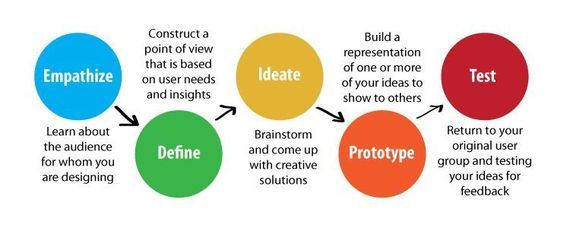The Association of American Colleges and Universities (AACU)) meeting this month (February 23-25) in Phoenix announced its upcoming General Education and Assessment Conference. The focus: "Design Thinking for Student Learning."
But what is design thinking and why now is it so important?
According to AACU, "General education sits at the intersection of an array of demands facing higher education--demands for more intentionally scaffolded, integrated, and engaged approaches to teaching and learning; more campus-community partnerships; more mentoring and advising; more multimodal learning experiences; and, above all, more meaningful assessment of student learning across these efforts."
The magazine Fast Company says design thinking is "The methodology commonly referred to as design thinking is a proven and repeatable problem-solving protocol that any business or profession can employ to achieve extraordinary results." Forbes Magazine describes it "in its simplest form, design thinking is a process--applicable to all walks of life--of creating new and innovative ideas and solving problems. It is not limited to a specific industry or area of expertise."
But what is it really?
It's learning how to think, and think about what you think. It's seeing a problem in its entirety, thinking "outside the box", or as academics might put it: it's divergent versus convergent thinking. Divergent thinking is a thought process that explores all the possible solutions before coming to any one conclusion. Convergent thinking doesn't explore all the possibilities but zeros in on a solution by "manipulating existing knowledge by means of standard procedures." It a quicker process, one most of us are familiar with because that's how we are conditioned to think.
Divergent thinking takes time, it usually comes after brainstorming an idea, but it has been proven to result in more creative solutions.
I asked a few of my colleagues at San Diego State University (SDSU) about design thinking. Joe Alter who teaches dance looked at paper cup while we were having coffee and asked me what was that was. I said, somewhat proudly, it's a container for holding coffee, maybe tea. He then said if you gave the cup to a 4 year old they might build a house or a car with it.
Kotaro Nakamura an architect by profession who also heads the School of Art and Design took me through the paces when he talked about asking his classes to draw a house, and they all showed a house with a chimney, windows, a roof etc. They all looked alike. Then he asked them how many people in their family, whether they ate together, what part of the country they lived-rural or urban setting, warm weather or not-and so forth. Then he asks them to draw a house again. Obviously it was a much different house.
That's design thinking at work.
As the Internet and worldwide web enables every nation, every community and every individual to compete with every other it challenges the U.S. as never before. As outsourcing, off offshoring and the increased use of technology-call it automation-continues to change and shrink the workforce, life long learning is the new normal, and design thinking is critical to preparing university graduates with the thinking skills to succeed in the new economy, an economy where creative and innovative problem solving is vital.
Fortunately, more and more educators are either adding to their existing curriculum, offering workshops to their teachers, or infusing every course with new teaching methods to get their students to think differently.
